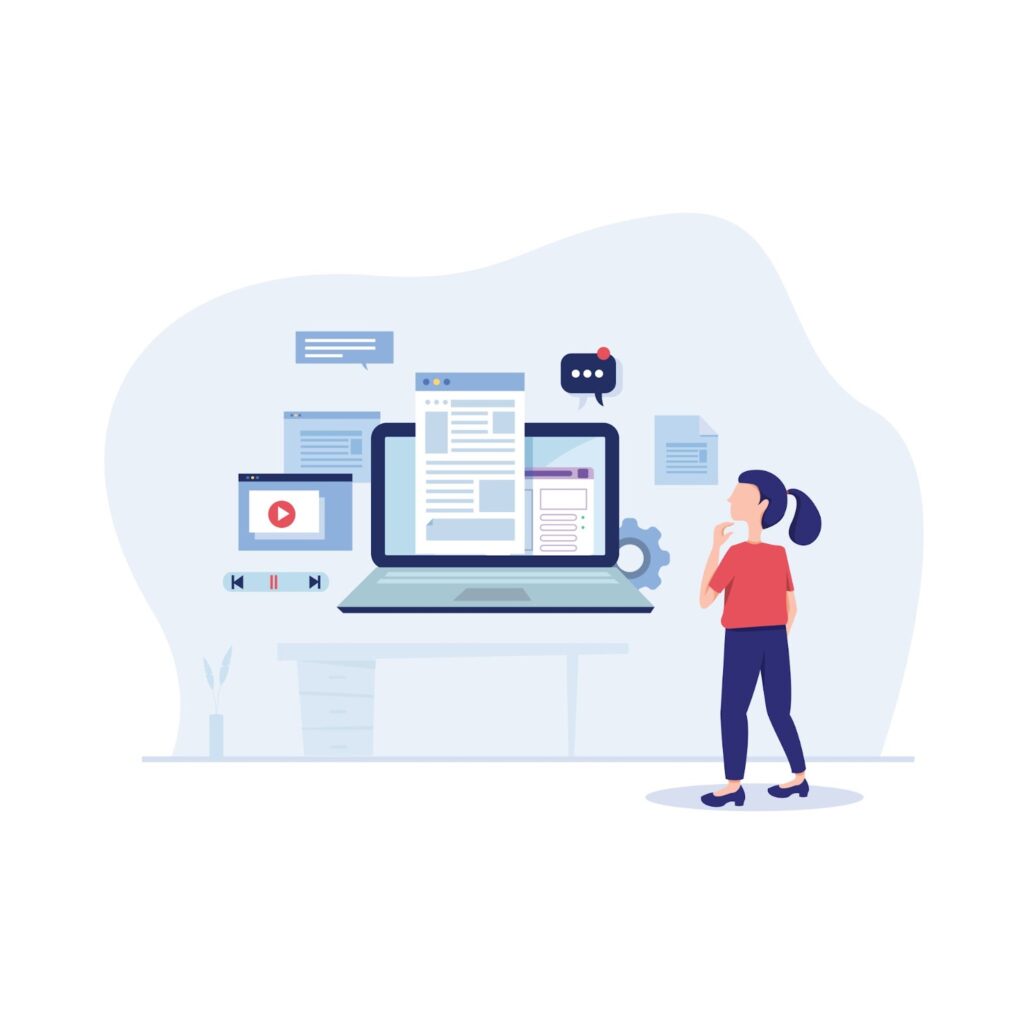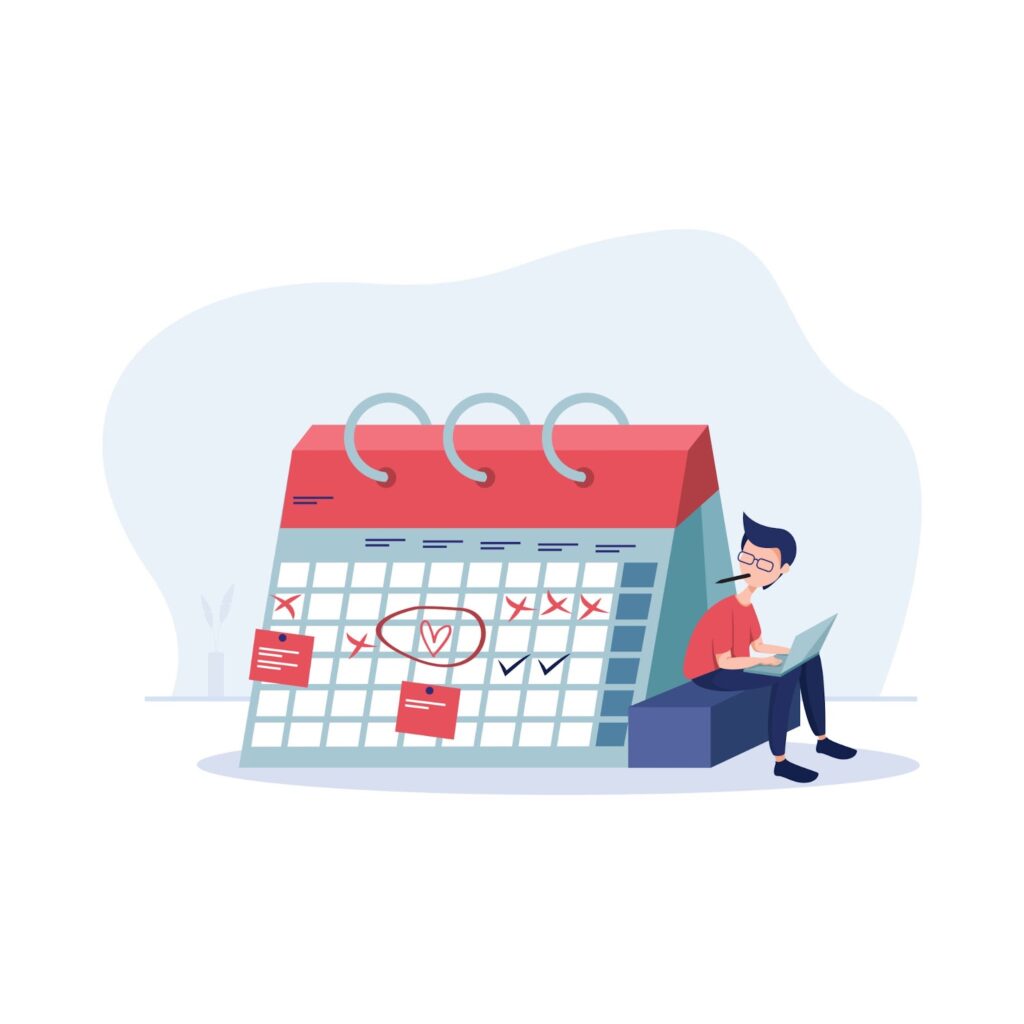10 Reasons Your Website Sucks
(And How To Fix It)
Blog | LeMay Consulting
Nothing is worse than writing bucketloads of content for your new website just for it to bring in a total of 0 visitors. Unfortunately, a bad website is as useful as an umbrella with holes, a fork with no prongs, or a paneless window (you get the point). Suppose you don’t spend hours studying website building and digital marketing or getting a professional digital marketer to do the work. Then, creating a website that blows others out of the water will be nearly impossible.
It’s important to mention that your website isn’t the only space on the world-wide-web. There are over a billion websites in the world that are continuously competing against each other to rank high in search engines. Unfortunately, this is why some website attempts end in shambles: Many website owners don’t know how to make their outdated websites competitive. However, with a bit of editing here and there, we can make it easier for you to rank your business website higher against your competitors.
To create the best possible website redesign, you must distinguish what makes a good website design and a bad one. Before you run to your website editor, identify what is causing your bad company website to fail. Let’s discuss ten easily fixable things that drag your outdated website behind all the others.
1. It’s Hard To Navigate
Imagine being a visitor to a new website where you want to learn more about the company. However, when the page loads, you feel lost without any direction. There’s no site menu, no header, no titles (or at least not in the right place), and buttons that look clickable aren’t. So what are you supposed to do? Most visitors would leave a bad company website like this out of frustration.
Your website must be easy to navigate to keep visitors on it. Otherwise, they won’t be able to access the information they’re searching for. It can also make your image appear unprofessional and disorganized. If your website feels like a maze with several paths and dead ends, it may be in serious need of some editing and restructuring.
Website templates can assist you in keeping your web pages pristine as you build them. Most websites follow specific guidelines to keep navigation as straightforward as possible. Effective web design often includes being mindful where a visitor’s eyes will head first. For example, making titles large and bolded helps visitors understand which page they’re on and what will follow the title. Headers or menus at the top of every page are also essential– but keep the number of header buttons to a minimum.

2. You Don’t Implement Search Engine Optimization
Nowadays, search engine optimization (SEO) is the primary way to get traffic to your website organically. SEO is the process of improving the quality of content on your website and the quantity of this content to rank higher when potential leads use search engines. The good news is that once your website is optimized, you’ll see traffic steadily increase. The bad news is that it can be challenging to learn, takes time, and must be updated frequently. Companies with bad websites continually ignore SEO demands because of how time-consuming it is. Still, it’s worth every minute of its undertaking.
The more your website content is specific in what you offer and your target audience, the more likely you will attract new visitors who are interested in what you provide. So be sure to implement content-specific keywords on each page of your website and continue to create long-form content that draws in curious viewers.

3. It’s Not Optimized For All Devices
Your webpage can look clean as a whistle on a desktop but a scrambled mess on a smartphone. Likewise, an unresponsive website may display well on one device but not adjust to another device’s screen. This error can result in your pages having overlapping text, enlarged photos, and more awkward website design errors that will turn away potential leads. Therefore, optimizing websites with poor accessibility is essential, or all the hard work you spend writing outstanding content will go to waste.
Optimizing your unresponsive website for all devices makes it accessible for all visitors, no matter their device. In addition, visitors are more likely to use their phones to browse the internet. A study found that mobile devices drove 61% of visits to U.S. websites in 2020, and this percentage is only increasing.

4. There Are Too Many Distractions On The Page
Companies with bad websites often overlook the style of their pages. If your website is swamped with varying sharp colors, large and plentiful photos, several fonts, and moving icons, then it’s probably too overwhelming for the average visitor. Websites are not just about getting visitors’ attention; their primary use is to inform visitors and increase conversions. Your website’s unique look might even amuse a visitor. Still, if it stops them from making a sale or filling out a contact form, it’s failed to get the correct type of attention.
One primary difference between good and bad website design is branding. Implementing branding guidelines can make your website look more polished and professional. In addition, utilizing a limited number of brand colors and fonts in your content, graphics, and logos will make your website more memorable and easy on the eyes. Branding can make your once-outdated website catch prospective customers’ attention while encouraging them to stay on your site
5. You’re Missing Call To Actions
Bad company websites often neglect a call to action (CTA), but every marketing campaign needs one to be successful. Without one, how are you supposed to direct visitors to make a purchase or get in touch with you? CTAs demand the reader to take action immediately and are proven to work well on websites. Without one, viewers might leave the site without taking any further action than browsing.
CTAs are easy to write and easier to implement into your outdated website. Every CTA should have some of these factors:
- A feeling of urgency
- A demand to take a specific action
- Evoke emotion or enthusiasm
- Explain how the action will improve their lives

6. Your Website Content Is Not Diversified
Just word content isn’t going to cut in. There are so many websites competing to rank in search engines that small businesses need to get creative to have a chance at generating leads. Of course, website text is essential to inform the viewers of your business. Still, there are many ways to improve SEO and modernize communication through your website. The best website redesigns have purposefully diversified content that is modern and engaging.
Introductory videos on your home page are a big win. This addition means less reading time for your viewer and more page view time for your analytics. In addition, video content allows you to outrank websites without videos and meet higher standards set by search engines. Photos and graphics are also quick ways to diversify your content and keep readers’ attention. Finally, implementing social media buttons or sections (such as embedding a Twitter timeline on your website) will show visitors that you’re active and keep them engaged.

7. You Have Broken Links (Or Worse, None At All)
Have buttons missing embedded links, or simply none at all? You’re probably missing out on an excellent opportunity to push traffic to other aspects of your business, such as social media pages and other external tools. If you have broken or missing links, it can also frustrate your visitors that your site isn’t working correctly. Bad website designs never use external links, while good website designs utilize them to direct traffic and increase conversions.
There are many ways to use links within your website and external pages. First, ensure that your outbound links to contact forms, social media pages, and blog information sources are working. Similarly, ensure that your internal hyperlinks to other pages on your site, such as buttons within your navigation menu, are accurate and active.

8. Your Photos Are Low-Quality
Low-quality, outdated website photos can make a stellar website look disorderly. Therefore, it’s essential to make sure that not only the word content but also the photo content is high quality. Sharp images that match your page content add interest to the visual composition of your website. When evaluating the photos you have on your website, think about these factors:
- Is my image blurry or pixelated?
- Does it match my company branding guidelines?
- Has my image been retrieved legally (purchased or non-copyright)?
- Is my image visible (is it too light or too dark?)
- Are these photos optimized, or do they make my website unresponsive?
Free photo sites such as Unsplash can provide you with professional, high-resolution photography that is non-copyright, meaning it’s free for public use. It also shows visitors that you dedicated time to improving your website, even if stunning photos don’t have anything to do with your services.

9. You Haven’t Updated Your Website In A Long Time
Website building isn’t a one-time job. It takes consistent updating to be on top of the latest SEO strategies, keep visitors adequately informed, and maintain a modern look. Outdated websites can fall behind all the others by having old information and weak digital marketing strategies. The best websites are redesigned every so often to keep things looking fresh.
We recommend updating your website every one to two years to ensure that your business information is up-to-date and accurate and improve your SEO quality. When you update your website, consider what might have changed over the past few years. For example, is there new information you want to add to your “about” page? Are your business times and contact information accurate?

10. It Has A Slow Loading Time
The ability to get any information at the snap of a finger has decreased most of the population’s attention span, which means your website needs to keep up with those demands. A 2022 study showed that the average human attention span is 8.25 seconds– less than a goldfish’s capabilities. So to improve conversion rates, you need to grab a visitor’s attention within mere seconds, which isn’t possible when your site takes several to load.
Several factors can increase your website’s loading time. While image and video quality are essential, unoptimized photos and videos can quickly become files too large to function correctly. Finding a balance between the number of image content and word content makes it possible to highlight top-notch photos and videos without overwhelming someone’s device capabilities. An unresponsive website design can also cause slow loading speeds because different screen sizes may not fit the current layout.
Experimenting with your website performance through speed tests can detect other factors inhibiting your loading time. Aspects behind the scenes, such as the inclusion of large scripts or too many HTTP requests, can be uncovered quickly. Many loading tests are also free of charge and offer detailed insight on how to treat the problem.

Your Website Might Suck, But It Has Potential
Now that you know what’s keeping your outdated website behind your competitors, it’s time to fix it. Don’t become another average company with a bad website in a sea of accessible and beautiful websites. Instead, learn how to differentiate between good and bad website designs so that you can conquer your own website creation. Taking the time to understand the ins and out of your website makes it easier to catch the little mistakes you missed before. So as you redesign your website to its best possible version, remember what to avoid and how you can top your competitors with these ten fundamental changes!

LeMay Consulting has the tools to make any business stand out from the crowd. To learn more about how we turn clicks into loyal clients through knowledge of SEO applications or to schedule a FREE 15-minute consultation, give us a call at (651) 895-5554 or contact us online.

